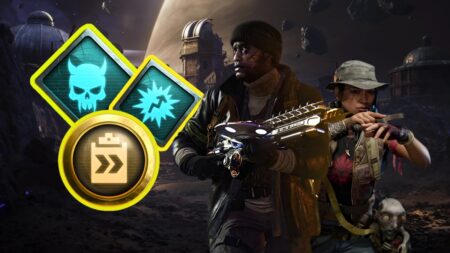Skip To...
Rocksteady Studios created some of the best superhero games of all time with the Arkham trilogy, but that reputation for quality only hurts Suicide Squad: Kill the Justice League. Like Two-Face’s complexion, it’s impossible not to notice the hideous scars of one when placed beside the beauty of the other. KtJL didn’t kill my love of Task Force X, but there’s no joy and even less charm to be found here once the live-service grind sets in. It’s the result of incredible talent being pointed in all the wrong directions, from the aesthetics of Metropolis to Harley Quinn’s gunplay. As a fan, this one’s rough.
Suicide Squad: Kill the Justice League Review
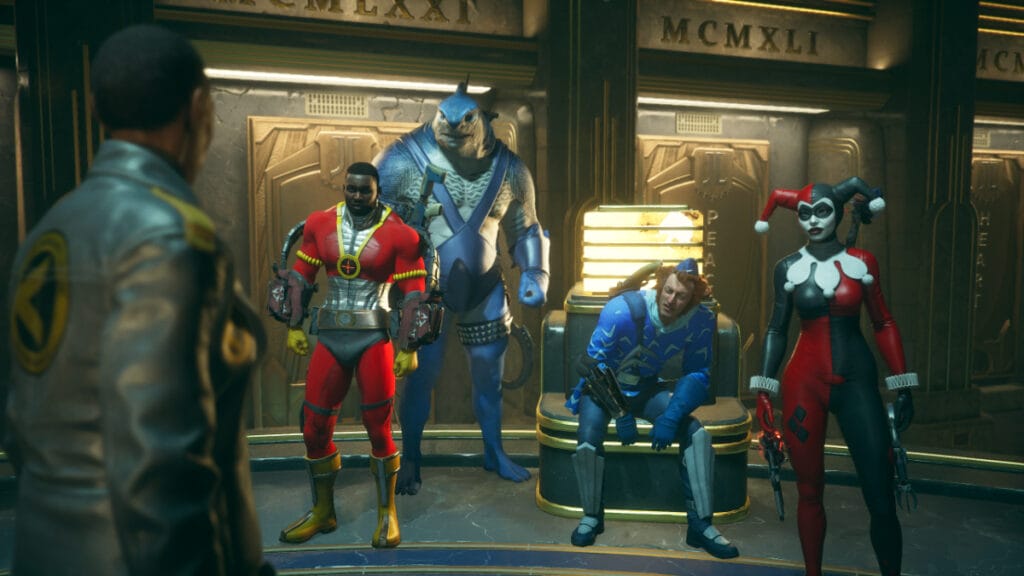
Notorious villains Harley Quinn, Deadshot, Captain Boomerang, and King Shark have been yanked from prison and tasked with an impossible mission: stop Earth’s greatest heroes from destroying the planet they once swore to protect. To pull that off you’ll need to recruit a team of allies, upgrade your gear, and complete missions ranging from Defend the Point and escort assignments to battles against giant superweapons. The campaign’s story is relatively brief, taking about 10 hours to complete during my playthrough. That said, the end-game will keep you playing for dozens if not hundreds more, if you can stomach the miserable grind.
Story: Big Brain Ideas

Evil geniuses don’t take over the world themselves: they get lackeys to do it for them. When Brainiac decides to launch a full-scale invasion of Earth, his first step is taking over the minds of the Justice League. Only Wonder Woman escapes his alien brainwashing, leaving Superman, Batman, Green Lantern, and The Flash under his control. The planet’s greatest heroes are now its greatest threat. Amanda Waller hatches a plan: recruit four of the least reliable villains to kill the Justice League or die trying. Harley Quinn and company have zero interest in fighting the Man of Steel, of course, but the bombs in their brains will kill them if they refuse.
To combat the alien invasion and corrupted League, you’ll recruit a variety of allies. These include the Penguin, Gizmo, and some surprise appearances. Completing tasks for these allies throughout Metropolis unlocks new gear, weapon mods, crafting options, and other assets. That gives you good reasons to check every side objective off your list. You’re intended to bounce back and forth between main story missions and ally objectives. Even after adding these tasks to your to-do list, you can still wrap up the game’s main content in under 20 hours.
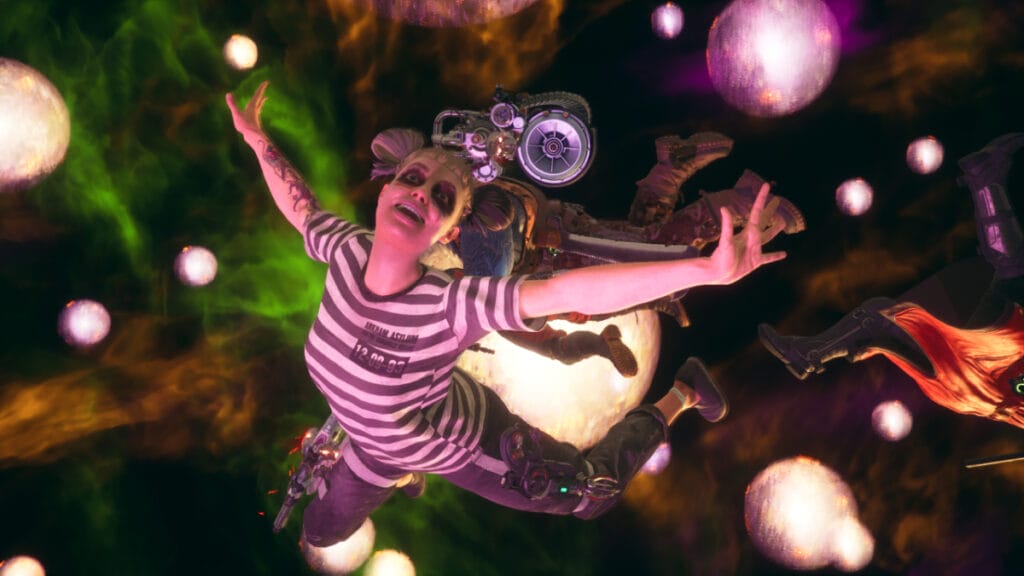
Without spoiling anything, Kill the Justice League‘s story doesn’t end there, however. The plot resolves in a way that leaves you plenty to do in Metropolis after the credits roll. In fact, as a live-service game, the majority of KtJL‘s content comes after you’ve dealt with the Big Bad. Although the mission continues, the story stops there, at least until the game gets its next injection of content. Since character interactions are easily where Suicide Squad is strongest, that’s a tremendous disappointment. The game is an iceberg: the quips, comedy, and cutscenes represent just the visible tip, beneath which there’s a soul-killing grind the size of Anti-Monitor.
Until it runs its course, the story does a great job of giving stage time to the Squad’s oversized personalities. King Shark blends Drax-style obliviousness with a sort of puzzled intelligence, while Captain Boomerang is exactly the kind of braggadocious buffoon you’d want him to be. Tara Strong’s Harley is an endearing loon who–unchained from her toxic clown of an ex–is finding her way. Deadshot also plays well as the confident mercenary, although his love for his daughter gets little attention, leaving him somewhat flatter than the others. Together, however, everyone dazzles.
Gameplay: Against the Grindstone
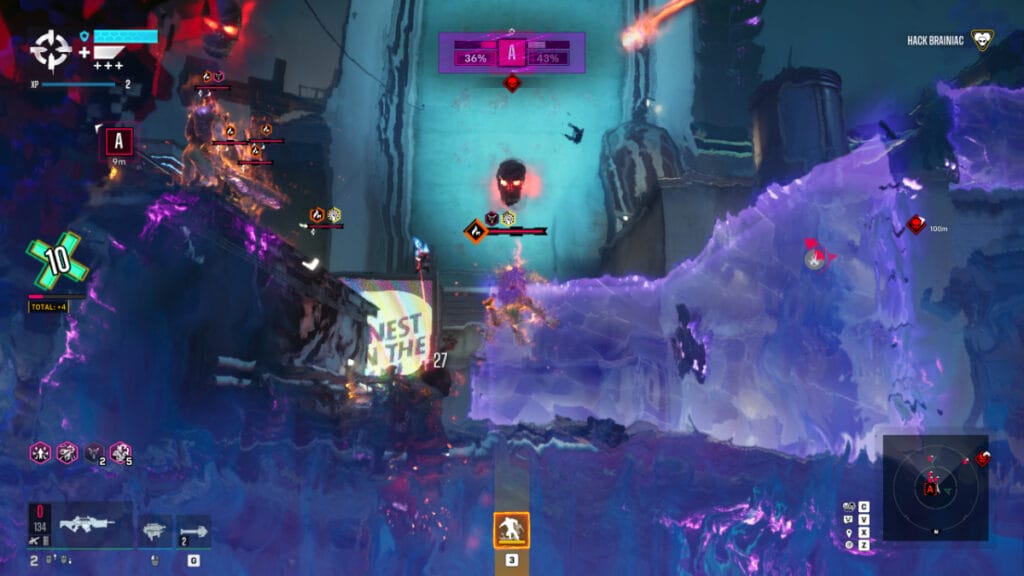
Starting a gameplay discussion with a description of the HUD may seem backward, but Suicide Squad‘s lamentable UI explains a lot. The sole point in KtJL‘s defense is that you can disable HUD elements you don’t care for, even wiping the screen clear for a cinematic experience if you’re willing to sacrifice useful info. That simply doesn’t atone for the fact that the default HUD is scattered, dysfunctional, overwhelming, and ugly. If you let it, it will clutter every inch of visual real estate with enemy indicators, damage numbers, objective markers, and a checklist of your unfilled Contracts. Games with more going on have found less obtrusive ways to present this same information. It’s just poor design.
Everything you do in Suicide Squad comes down to either combat or movement, and both systems have problems. Once you unlock grenades and elemental weapon augments, combat turns into a fireworks display of particle effects, but lackluster weapon impacts leave many attacks feeling underwhelming. The guns and melee weapons just don’t feel that good. Compare Suicide Squad to Destiny 2, a direct competitor in the live-service space, and there’s no competition. Rocksteady is capable of delivering top-tier superhero combat. The devs simply didn’t do it here.
I could live with so-so combat if the encounters were interesting. They’re not. Your missions are a recycled selection of half-baked ideas we’ve seen better versions of before. The boss battles against The Flash, Green Lantern, and others feel underdeveloped too. Not even the Mutators that give enemies unexpected buffs manage to keep things interesting. One encounter with The Dark Knight forces you to repeat the same bland sequence of actions with every character in your party back-to-back. Mayonnaise is spicier than the design of these missions.
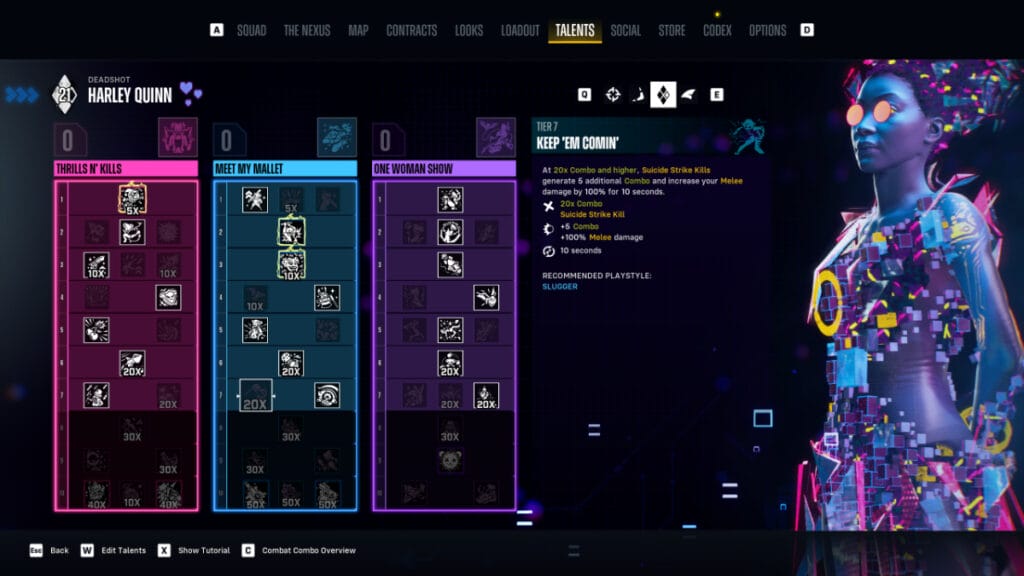
Every character has three Talent trees that offer them unique perks as they level up. Build variety is mediocre. The larger problem is that almost every Talent boils down to either a flat percentage buff or bonus tied to the game’s Combo system. There are almost no new moves to be had, and I seldom noticed the size of my current Combo, because it rarely seemed to matter. You can respec at will, but there’s little point. Your characters will never feel meaningfully different. Beyond their unique movement mechanics, almost nothing distinguishes one Squad member from another, no matter how you develop their Talents.
Thanks to some pilfered Justice League tech, everyone has a unique means of travel. From Harley’s grappling hook and Deadshot’s jetpack to Captain Boomerang’s Speed Force teleportation and King Shark’s mighty leaps, it’s all cool. Temper your expectations though. Nothing here compares to the feeling of soaring through New York in Spider-Man 2. At first, I disliked Suicide Squad‘s movement and blamed these systems. I later realized the movement itself was solid. The problem lies with the world you’re moving through. More on that later.
When you’re not pummeling corrupted heroes, there are Riddler races to run, trophies to collect, and end-game content to devour. As a live-service game, the vast majority of Suicide Squad‘s content outlives its plot. You will spend dozens of hours trying to get god rolls on all the best weapons. The combination of crafting RNG and in-game loot boxes means you have little control over what you receive. It’s only after completing the story that the game reveals its full scope, and though it won’t surprise anyone who played Marvel’s Avengers, it’s an exhausting grind to even think about.
Graphics & Audio: Life in the Cardboard City
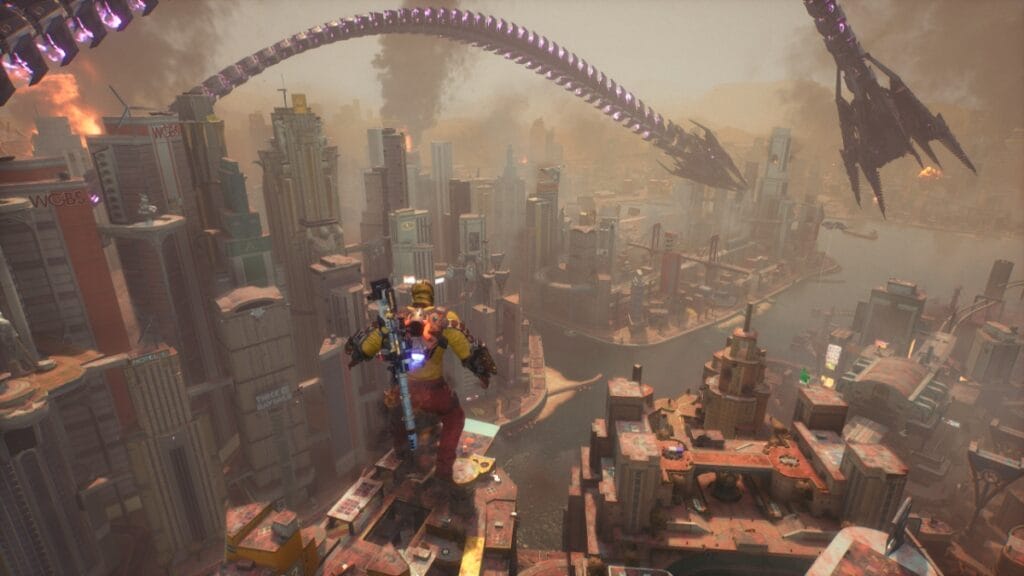
Deadshot steps off the skyscraper’s edge and plummets toward the street below. As the pavement rushes up toward him, his jetpack howls to life, sending him rocketing upward between buildings. The pack coughs and sputters, but with an aerial flourish, he reengages the engine, sending himself careening toward the stadium where Brainiac’s alien army awaits. From mid-air he pitches a Freeze grenade down into a mass of Brutes, encasing his enemies in icy coffins. As Deadshot’s feet touch down on the stadium’s roof, he draws his sniper rifle, bringing the first of his frozen foes into his sights. These moments feel straight out of a comic. They’re just too rare.
Take one look at Captain Boomerang’s muttonchops or Harley’s manic expressions, and you see the essence of the character. Rocksteady Studios did a phenomenal job with their character designs. Whether you’ve been following Waller’s team since the Silver Age, got into them during Glass and Dallocchio’s New 52 run, or fell in love with David Ayer’s 2016 film, you’ll probably find something to love about Rocksteady’s version. They’re funny, irreverent, and incompetent in all the right ways. I enjoy Rocksteady’s interpretation of the characters. I just wish the setting and mechanics treated them better.
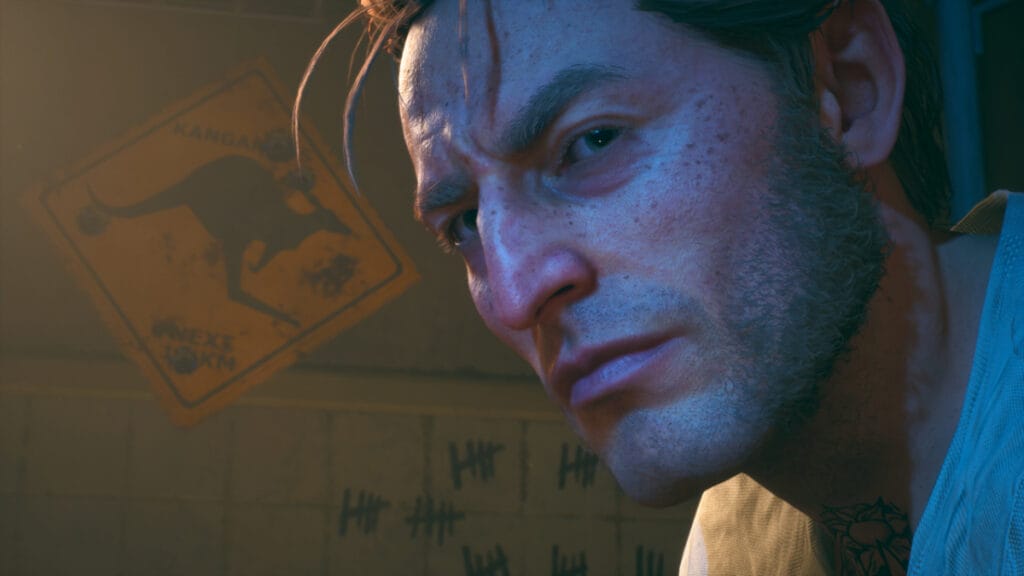
Unfortunately, Kill the Justice League‘s Metropolis has none of the warmth, diversity, or depth of Peter Parker’s NYC or Arkham City‘s Gotham. It’s hard to put a finger on what exactly went wrong. There’s obvious talent behind the models, textures, and sounds. You can find newspapers with legible headlines scattered around the streets, but details like that never translate into a compelling setting. Every neighborhood of Metropolis feels as flat and repetitive as a paper doll chain. It’s a setting so aggressively uninteresting that it managed to leech the joy from otherwise engaging movement mechanics.
The performances of actors like Tara Strong and Daniel Lapaine are excellent, and the sounds of battle don’t disappoint. The ambient noise is a letdown though. Rain or shine, Metropolis sounds flat. As a live-service game, Suicide Squad: Kill the Justice League will only grow from here, adding new environments to explore. None of the current content suggests that what’s to come will improve things, however. In the vacuum created by this desolate setting, the only sound left is the whisper of microtransactions summoning you to buy another cute outfit for Harley.
Conclusion: Waller’s Rejects
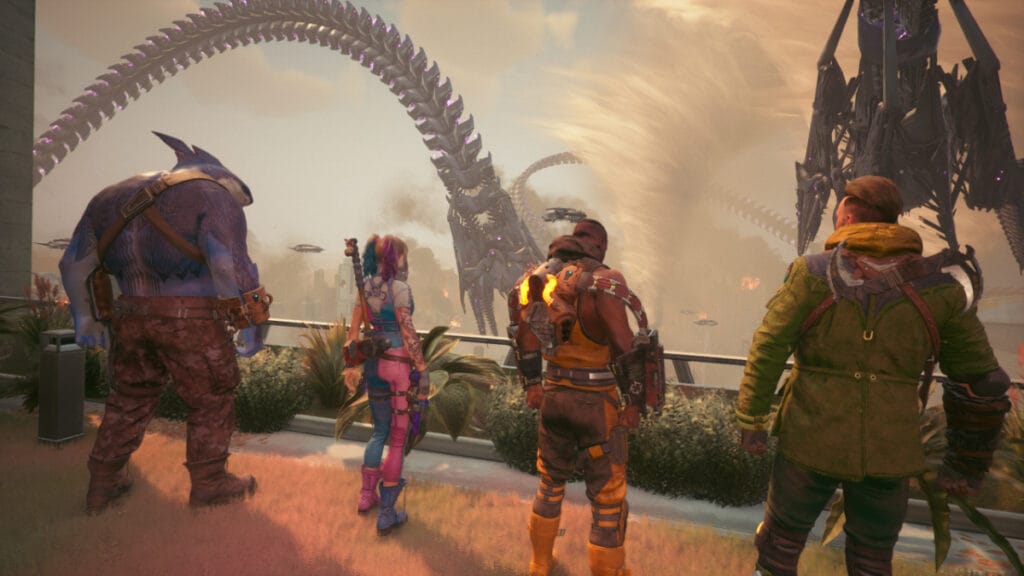
As a diehard DC fan and Rocksteady enthusiast, I left my Suicide Squad playthrough feeling hollow. For a similar experience, smear frosting on a piece of cardboard. I experienced no crashes and only a handful of bugs during my time with the game, but it’s impossible to recommend at a $70 price point, let alone the $100 or more you’d need for the Deluxe Edition. If you can satisfy yourself with 15-20 hours of actual entertainment followed by a timeless eternity of grinding befitting the Phantom Zone, you may enjoy Suicide Squad: Kill the Justice League. For those seeking a game worthy of Kevin Conroy’s legacy and that of the Arkham trilogy, the search continues.
Suicide Squad: Kill the Justice League is available for PC (reviewed), PlayStation 5, and
Suicide Squad: Kill the Justice League (PC Reviewed)
A hollow live-service superhero game more interested in selling cosmetics than delivering fun.
Pros
- Endearing storytelling and Squad banter
- Flashy combat
- Solid humor
Cons
- Boring end-game
- Repetitive mission design
- Lackluster builds




